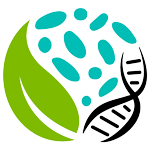Shewanella knowledgebase: integration of the experimental data and computational predictions suggests a biological role for transcription of intergenic regions
Tatiana Karpinets, Margaret F. Romine, Denise D. Schmoyer, Guruprasad Kora, Mustafa H. Syed, Michael R. Leuze, Margrethe H. Serres, Byung H. Park, Nagiza F. Samatova, and Edward C. Uberbacher
09 August 2010, Database (Oxford) 2010(0): baq012; doi: 10.1093/database/baq012.
Abstract
Shewanellae are facultative gamma-proteobacteria whose remarkable respiratory versatility has resulted in interest in their utility for bioremediation of heavy metals and radionuclides and for energy generation in microbial fuel cells. Extensive experimental efforts over the last several years and the availability of 21 sequenced Shewanella genomes made it possible to collect and integrate a wealth of information on the genus into one public resource providing new avenues for making biological discoveries and for developing a system level understanding of the cellular processes. The Shewanella knowledgebase was established in 2005 to provide a framework for integrated genome-based studies on Shewanella ecophysiology. The present version of the knowledgebase provides access to a diverse set of experimental and genomic data along with tools for curation of genome annotations and visualization and integration of genomic data with experimental data. As a demonstration of the utility of this resource, we examined a single microarray data set from Shewanella oneidensis MR-1 for new insights into regulatory processes. The integrated analysis of the data predicted a new type of bacterial transcriptional regulation involving co-transcription of the intergenic region with the downstream gene and suggested a biological role for co-transcription that likely prevents the binding of a regulator of the upstream gene to the regulator binding site located in the intergenic region.
Highlights

Interplay between the ortholog and genomes editors in SKB (a) and the interface for curation of the Shewanella orthologous table (b). The interface provides access to different types of product annotations, to sequence alignments and to results of the automatic checking of the consistency on protein length and protein families across products of the orthologous group.

Pearson correlations of changes in the expression [log (2) ratio of the average expression level in Crp(−) mutant versus wild-type strain] of IG regions with changes in the expression of upstream and downstream genes. The analyzed data sets are provided in the Supplementary Data 3. Subset I (1466): IG regions with the same direction of change in gene expression as their neighboring genes. Subset I_S (449): A selection of IG regions from Subset I with significant changes in gene expression in the IG regions and in the neighboring genes. Subset A (805): IG regions with directions of changes in gene expression that are opposite to upstream genes. Subset A_S (54): A selection of IG regions from Subset A with significant changes in gene expression in the IG regions and in the neighboring genes. Subset B (820): IG regions with directions of changes in gene expression that are opposite to downstream genes. Subset B_S (48): A selection of IG regions from Subset B with significant changes in gene expression in the IG regions and in the neighboring genes

Regulation of pykA, hexR and enzymes of the ED pathway in MR1 and overlay of the regulatory information with the experimental data. The figure indicates that enzymes of the ED pathway (SO2486_ SO2489) as well as pykA are significantly upregulated in the Crp(−) mutant, but hexR and the intergenic region between hexR and pykA are downregulated. The regulatory information provided in the first track of the browser (TractorDB) gives an explanation for the observed changes in the gene expressions. It indicates that the genes, hexR and pykA and the operon with the enzymes of the ED pathway have binding sites in their promoters predicted by TractorDB. Thus, both genes and the operon are likely regulated by Crp. In the wild-type strain of MR1, the ED pathway is not active because of upregulation of hexR by Crp during the transition from aerobic to anaerobic conditions. The Crp(−) mutant strain does not produce Crp; therefore, the transcriptional repressor HexR is absent in the mutant, and enzymes of the ED pathway, which were suppressed by HexR in the wild-type strain, are upregulated in the Crp(−) strain.
Citation
Karpinets TV, Romine MF, Schmoyer DD, Kora GH, Syed MH, Leuze MR, Serres MH, Park BH, Samatova NF, Uberbacher EC. Shewanella knowledgebase: integration of the experimental data and computational predictions suggests a biological role for transcription of intergenic regions. Database (Oxford). 2010 Jul 6;2010:baq012. doi: 10.1093/database/baq012. PubMed PMID: 20627862; PubMed Central PMCID: PMC2911847.
Outside Links
http://shewanella-knowledgebase.org:8080/Shewanella/
http://spruce.ornl.gov:8080/Shewanella/
http://www.ncbi.nlm.nih.gov/pmc/articles/PMC2911847/figure/F1/
http://www.ncbi.nlm.nih.gov/pmc/articles/PMC2911847/figure/F2/
http://www.ncbi.nlm.nih.gov/pmc/articles/PMC2911847/figure/F3/
http://www.ncbi.nlm.nih.gov/pmc/articles/PMC2911847/figure/F4/
http://www.ncbi.nlm.nih.gov/pmc/articles/PMC2911847/figure/F5/

